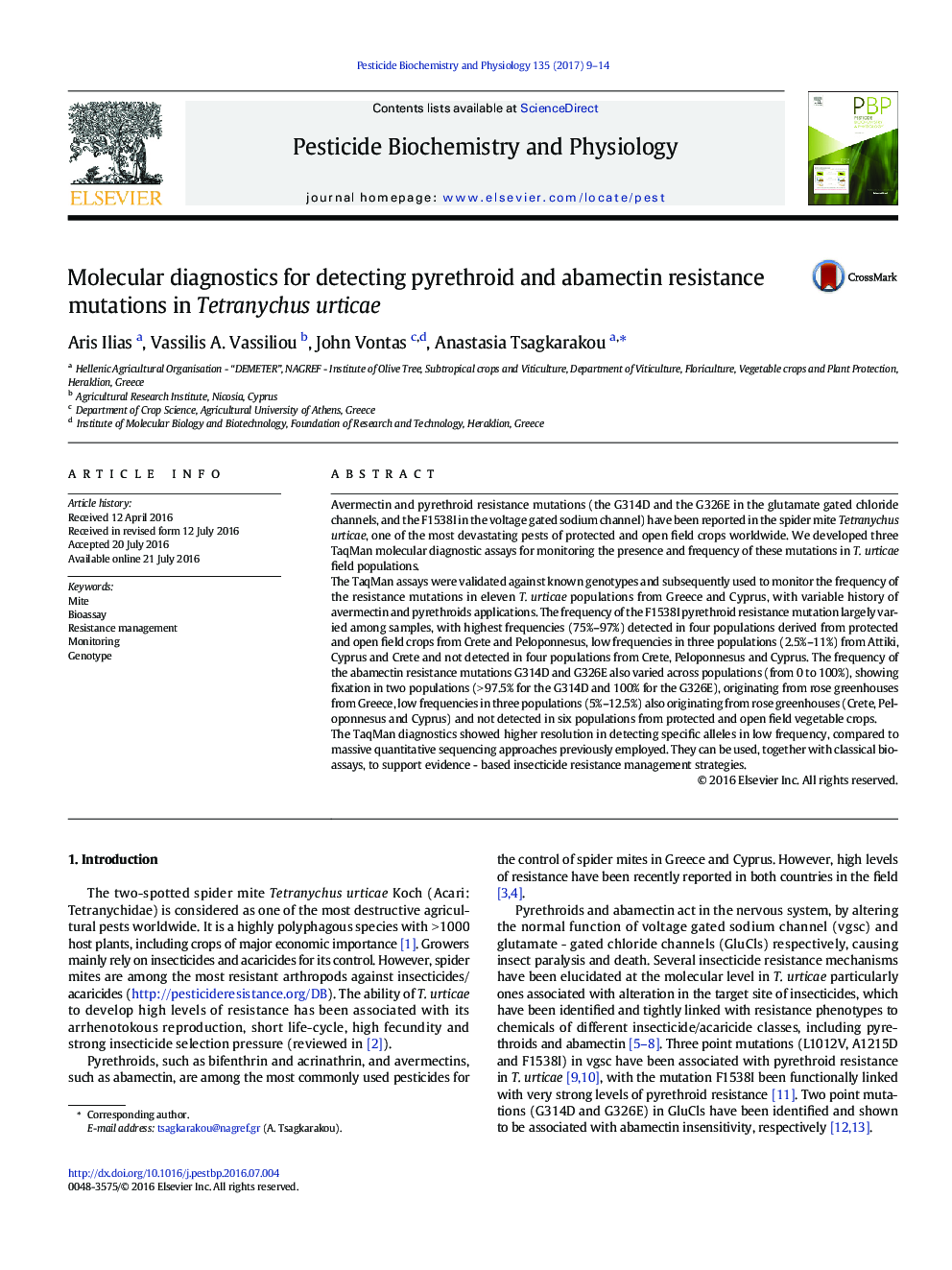| کد مقاله | کد نشریه | سال انتشار | مقاله انگلیسی | نسخه تمام متن |
|---|---|---|---|---|
| 5514870 | 1541764 | 2017 | 6 صفحه PDF | دانلود رایگان |

- Taqman assays were developed and used to monitor abamectin (G314D, G326E) and pyrethroid (F1538I) resistance mutations
- The frequency of resistance mutations largely varied among T. urticae from Greece and Cyprus, in accordance with pesticide use
- TaqMan diagnostics showed higher resolution in detecting alleles in low frequency, compared to massive sequencing approaches
Avermectin and pyrethroid resistance mutations (the G314D and the G326E in the glutamate gated chloride channels, and the F1538I in the voltage gated sodium channel) have been reported in the spider mite Tetranychus urticae, one of the most devastating pests of protected and open field crops worldwide. We developed three TaqMan molecular diagnostic assays for monitoring the presence and frequency of these mutations in T. urticae field populations.The TaqMan assays were validated against known genotypes and subsequently used to monitor the frequency of the resistance mutations in eleven T. urticae populations from Greece and Cyprus, with variable history of avermectin and pyrethroids applications. The frequency of the F1538I pyrethroid resistance mutation largely varied among samples, with highest frequencies (75%-97%) detected in four populations derived from protected and open field crops from Crete and Peloponnesus, low frequencies in three populations (2.5%-11%) from Attiki, Cyprus and Crete and not detected in four populations from Crete, Peloponnesus and Cyprus. The frequency of the abamectin resistance mutations G314D and G326E also varied across populations (from 0 to 100%), showing fixation in two populations (>Â 97.5% for the G314D and 100% for the G326E), originating from rose greenhouses from Greece, low frequencies in three populations (5%-12.5%) also originating from rose greenhouses (Crete, Peloponnesus and Cyprus) and not detected in six populations from protected and open field vegetable crops.The TaqMan diagnostics showed higher resolution in detecting specific alleles in low frequency, compared to massive quantitative sequencing approaches previously employed. They can be used, together with classical bioassays, to support evidence - based insecticide resistance management strategies.
251
Journal: Pesticide Biochemistry and Physiology - Volume 135, January 2017, Pages 9-14